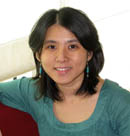Why Singapore’s English Teachers Should Embrace Singlish, Not Fight It
Is it time for Singaporean educators to embrace Singlish as a legitimate learning tool? What the Research […]
Read More
Assessments are a fact of life for most, if not all, students and teachers in Singapore. When we think of assessments, we often think of externally administered tests and examinations. In this article, we see how self-assessment can help motivate students to take responsibility for their own learning.
 As a former teacher and educational psychologist, Wong Hwei Ming is familiar with both classroom and psychological assessments. So when she embarked on a doctoral degree, she decided to focus her research on how students look at their own learning through self-assessment.
As a former teacher and educational psychologist, Wong Hwei Ming is familiar with both classroom and psychological assessments. So when she embarked on a doctoral degree, she decided to focus her research on how students look at their own learning through self-assessment.
“The assessment system in Singapore is changing,” explains Hwei Ming. “We are incorporating more forms of assessment, such as project work, portfolios and performance-based tasks. Self-assessment is one of these alternative assessments.”
Because self-assessment is formative in nature, rather than summative, it allows students to be involved in the process of learning. Students take responsibility for their own learning and are involved in reflecting, analysing, synthesising and evaluating their own performances. This form of assessment also allows students’ learning to be monitored and guided while the learning process is ongoing.
Hwei Ming’s research focuses on self-assessment at the primary school level. She believes that students, even the young ones, have much to say about what and how they are learning. Self-assessment is one means of allowing them to articulate their learning process.
“Although there has been extensive research done at the higher education levels, there isn’t any done in the primary schools yet,” she says. “I wanted to see how much self-assessment are being carried out in the primary school level, and hope to see some of the benefits of self-assessment appearing in our local context,” she adds.
As part of her research, Hwei Ming taught students three strategies of self-assessment: using checklists, learning logs and rubrics. In each of these strategies, learning was assessed using the criteria of understanding, reasoning, clarity, communication and effort.
While Hwei Ming’s research is still ongoing, what she has observed thus far provides sufficient reason to show the viability of using self-assessment among primary school pupils.
She found that as students became more involved in their learning, they started to ask questions like, “Am I doing the right thing?” and “Do I need to do more?” “When students start doing self-assessment, they will take some responsibility for their own learning,” she notes, “and by triggering this, they actually do become motivated as well.”
Hwei Ming also found that many students had a better understanding of their work as they could gauge themselves against given standards and try to better themselves, and some even began to do better in their studies. This, in turn, boosted their self-esteem and confidence.
Overall, students seemed more eager to persevere with their tasks when they discovered that self-assessment was not difficult to do. Feedback from teachers involved in her research has also validated these observations.
“The students don’t feel so threatened and scared when they make mistakes, and they ask questions when they don’t understand,” says Hwei Ming.
In addition, teachers noticed that for some of the better classes, the students were able to recognise what the next step in their learning was, which she felt was a significant achievement for primary school students.
Attesting to the value of using self-assessments in classrooms, Hwei Ming says, “The good thing about self-assessment is that it doesn’t discriminate against any ability group. All the students learned something regardless of their ability.”
With so many benefits, it may be surprising to note that self-assessment is not difficult to use. “Teachers can actually start using self-assessment as soon as they start teaching,” explains Hwei Ming. “You don’t need to accumulate experience before you can conduct it.”
Self-assessment can take place any time during the lesson, and it can be in written or verbal forms. It can be as simple as asking, at the end of each lesson, “How many of you understood what was being taught? Put a thumbs-up for those who understood the lesson and a thumbs-down for those who didn’t.”
So, if you’re looking to give your students that added boost in their learning, why not try self-assessment? Hwei Ming certainly gives it a thumbs-up!
> Check out these links for more information on self-assesment: